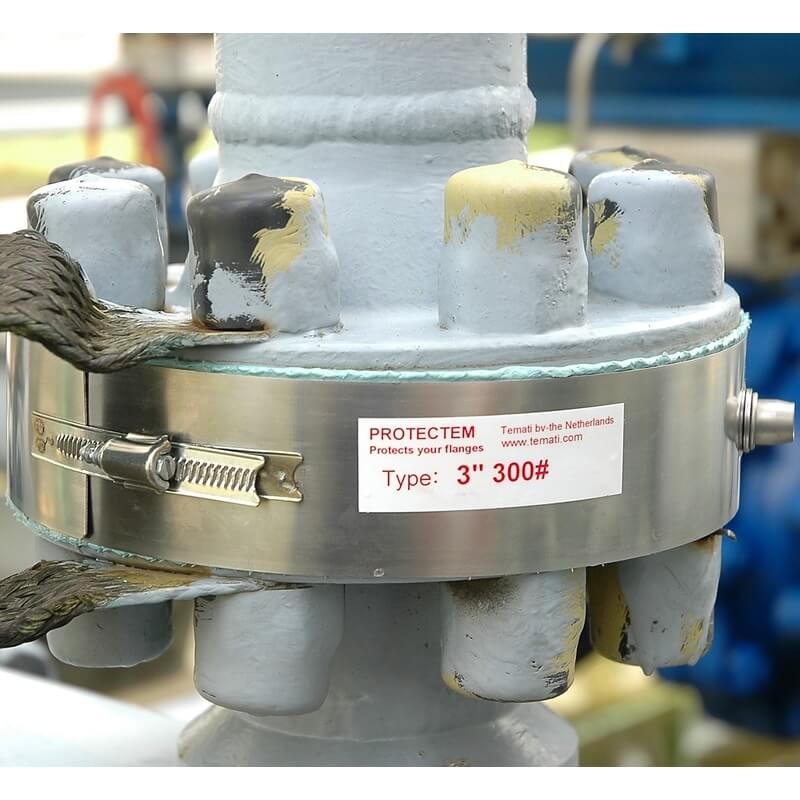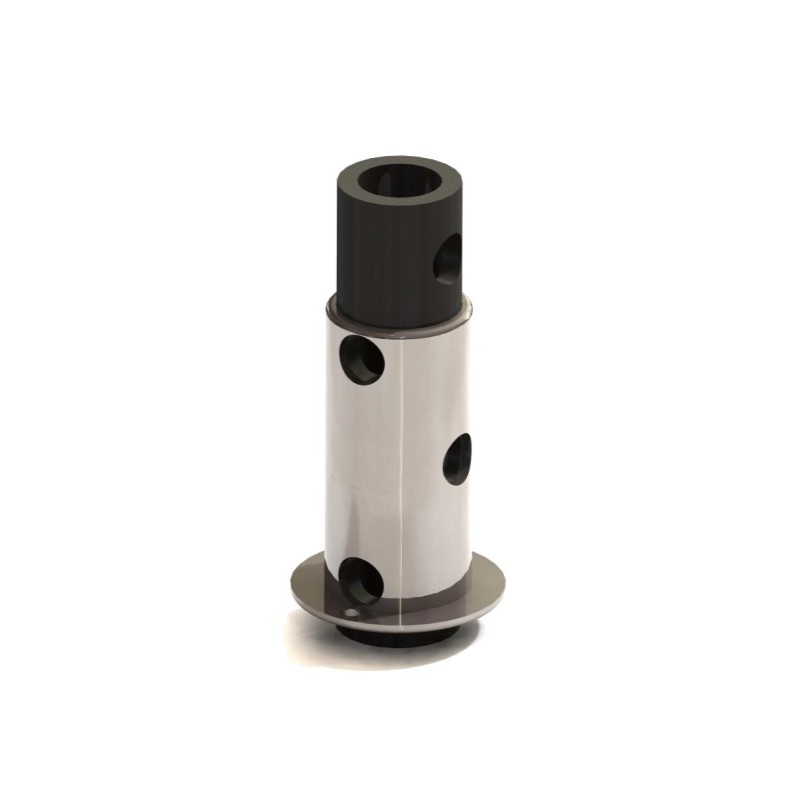Examples corrosion under insulation
As insulation materials are installed for a longer period, efficient, durable and lifecycle-proof systems are required, as well as regular inspection plans. Insulating plant and piping is an important factor in reducing energy consumption and associated CO2 emissions. But it does create a major concern in the industry due to corrosion under insulation (CUI).
Indeed, CUI is a difficult phenomenon to control and also often difficult to detect. The rate of degradation also depends on many factors. Corrosion under insulation occurs throughout the global process industry and can lead to major, unwanted failures. Preventing corrosion requires not only the application of suitable coatings, but also the timely detection of corrosion under insulation. Below are some products as examples:
- Inspection holes for insulation
- Sealants and coatings
- Flange protection
- Drain plugs
- Spacer system mechanical protective layer
• Inspection holes for insulation
To inspect insulated pipes, vessels, tanks and equipment, it is sometimes more convenient to install an inspection plug, instead of removing parts of the insulation. Inspection plugs enable recurrent Non-Destructive Testing (NDT) or CUI inspections to be carried out safely, and with minimal exposure, through resealable entrances. Because the inspection plug seals tightly, you maintain a weatherproof seal to protect insulation. Moreover, the plugs are made of silicone rubber which also makes them resistant to high temperatures, mechanical damage, weathering and UV.


• Sealants and coatings
The ability to completely seal an insulation system is one of the most effective ways to prevent corrosion under insulation. Sealing of seams and fittings in insulation materials in cold insulation systems such as multicellular glass, polyurethane, polyisocyanurate requires a vapour sealant. Foster 95-50 Flextra® Sealant and Foster 30-45 Foamseal® Sealer form a flexible buffer in the seams of the insulation material. These Foster sealants do not shrink or crack. Even during repeated cycles of alternating high and low temperatures, e.g. due to commissioning and decommissioning.
Foster 95-44 Elastolar Sealant is used, among other things, for vapour sealing seams and overlaps in aluminium cladding. Elastolar Sealant is a flexible butyl – elastomer-based vapour barrier sealant. This elastic coating provides a seamless and weather-resistant membrane that prevents water penetration. Moreover, the sealant has good resistance to high and low temperatures which makes it suitable for both cryogenic and thermal insulation systems.



• Flange protection

Space between flanges are difficult to access, making maintenance difficult. The high risk of leaks at gaskets is therefore a reason not to insulate flanges. From the point of view of energy loss, this is not a desirable choice. In addition, leaks due to weakened flange bolts can eventually lead to corrosion under insulation or worse; fire and explosion risks.
A flangebelt is generally used to detect leaks in flange connections, but also provides personal protection in the case of so-called “spray outs”. In cold/cryogenic insulation systems, flangebelts are also referred to as “sniffer belts”. A stainless steel Protectem Flangebelt™ with a leak detection pipe not only prevents moisture from leaks from entering the insulation and causing CUI.
The Protectem Flangebelt™ remains under the insulation, allowing the entire system to be insulated. If a final test reveals that there is a leak in the flange connection somewhere, the insulation only needs to be removed there. After solving the leakage, only that flange connection needs to be re-insulated, leading to high cost savings.
• Drain plugs
Due to various causes, water or moisture can still enter the insulation, eventually leading to deterioration of thermal properties and incipient corrosion (C.U.I.). With the installation of drain plugs in the outer jacketing, any water or moisture entering the insulation system can drain or evaporate unhindered. A Temati drain plug ensures dry insulation and thus extends the life of the installation. The drain plugs are easy to install and adapt to the insulation thickness. For environments with high fire behaviour requirements, Temati supplies TN5 fireproof drainplugs™
Another way to detect the presence of water and/or moisture in an insulation system can be with the Temati Drainplug Water Indicators (TWI) in combination with other forms of NDE inspections. This reduces risk areas and allows visual inspections to be planned more economically. The water indicator responds to all liquids. Its primary function is to indicate the presence of liquids due to: water ingress, leakage and condensation.



• Spacer system mechanical protective layer
As mentioned earlier, CUI can occur when wet and saturated insulation materials come into contact with pipes or equipment (substrate). From a corrosion prevention point of view, the most logical solution is to disconnect the insulation from the substrate. A proven method is called Non-Contact. This can be easily achieved by using spacers or specially designed rings, as shown below.
However, from a thermal insulation point of view, the phenomenon of chimney effect may occur which may lead to additional heat loss. Therefore, Non-Contact should be carefully considered at the design stage.

Another system also described in the CINI manual is to create an air cavity on the outside of the insulation system. By using a studded profile foil such as Temafol, the cladding/sheathing is detached from the insulation material. This creates a draft in the cavity allowing moisture to evaporate. And because in this system the cladding/sheathing is always colder, moisture can condense against the inside of the cladding and drain freely from the system.
Questions or contact?
If you have technical or commercial questions about corrosion under insulation products or any of our other solutions, please contact us. We will be happy to think along with you for the most efficient insulation solution in your situation.